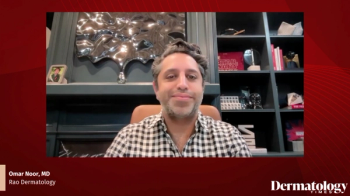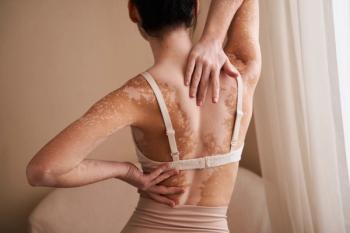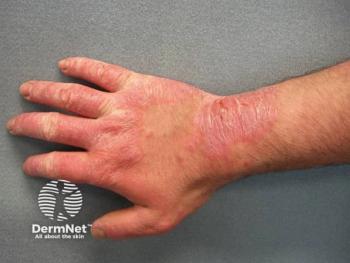
Common Sunscreen Allergens: What to Watch For
Key Takeaways
- Oxybenzone is a prevalent allergen in sunscreens, with redness and itching as common allergic reactions.
- Mineral-based sunscreens, such as zinc oxide and micronized titanium dioxide, offer alternatives for those with allergies.
Kolansky identifies oxybenzone and fragrances as leading causes of sunscreen allergies.
Glenn Kolansky, MD, FAAD, a double board-certified dermatologist and Mohs surgeon, has been in clinical practice for over 30 years. He serves as an assistant professor at Hackensack Meridian School of Medicine and is certified by the American Board of Dermatology in both dermatology and Mohs micrographic surgery. In a recent conversation with Dermatology Times, Kolansky shared his expert insights on managing sunscreen allergies, the rise of hypoallergenic and mineral-based products, and emerging treatments in hair loss—all informed by decades of hands-on experience and patient care.
Q&A
Dermatology Times: What ingredients in sunscreen are most commonly responsible for allergic reactions?
Kolansky: Oxybenzone is the most common irritant, although people could also be allergic to fragrance, coloring agents, or preservatives. But most commonly, it’s the oxybenzone.
DT: How do you typically diagnose or confirm sunscreen allergies?
Kolansky: People put on sunscreen, and if they turn red right away, you know they're allergic. Redness is usually the first sign; it could also be itching. In rare cases, it could be blistering or severe itching. It really depends on the person. Again, it could be any ingredient, but usually it's the oxybenzone or a fragrance.
DT: Once identified, how do you help patients test or avoid problematic sunscreens?
Kolansky: You have 2 options. A patient can do a patch test at home. They take a clean area of skin, apply whatever sunscreen in question, and put it on for 48 hours. If they react, they know they’re allergic. If it starts itching right away, they don’t have to wait the 48 hours. They can put it on their elbow or thigh—just an unexposed area—to see if they’re allergic.
DT: How should patients who are allergic to common sunscreen ingredients protect themselves from the sun?
Kolansky: We have a new subset of mineral-based sunscreens—zinc oxide and micronized titanium dioxide. I tried one this morning with a very mild tint. It went right in. Usually, these sunscreens absorb the visible light spectrum, so you avoid that white hue. A lot of the tinted sunscreens prevent that, and they come in a variety of light and dark shades. It works, and you’re not allergic to it. I always try things before I recommend anything to a patient.
DT: What advice would you give fellow dermatologists trying to balance sun protection and managing sunscreen allergies?
Kolansky: Hats. Not a cotton hat or one with holes. Cotton transmits light, but polyester doesn't. If you buy a sun shirt that’s tested and has a sun protection factor, it’ll cost more. But most polyester works even if it’s not tested. Wear glasses for UV protection, a hat, and a T-shirt. I always put a shirt on—it’s easier than applying sunscreen on my back. I’m not a sun worshipper. I usually use a moisturizer with sunscreen on my face, and lately I’ve been more aggressive about applying it to my arms—especially the left from driving.
DT: Are there any current clinical projects or research you’re excited about?
Kolansky: I do resurfacing, radiofrequency microneedling, and I also have an interest in hair and skin cancer. There’s a phase 2 trial for a new medication for hair loss. It doesn’t even have a name yet—just 4 letters. It might be more promising than anything we currently have. People spend a lot of money on hair loss treatments. We currently use minoxidil, orally or topically. For men, we can also do finasteride. For women, we can add spironolactone. This new medication might add another option—we’ll have to wait and see.
DT: Do you think sunscreen options have improved in recent years?
Kolansky: Absolutely. Five years ago, we didn’t have as many options. The FDA in the US is slow—Europe and Canada often have newer ingredients we don’t, like Mexoryl. You can get an SPF 50 or 60 elsewhere that we can’t get here. Also, apply enough—about half a shot glass for the body. Most people don’t apply enough. And reapply often. Water-resistant means 40 or 80 minutes. So don’t wait 2 hours—reapply every hour and a half to be safe. Also, cloudy days can still cause burns—especially on the soccer field. Just because you don’t see the sun doesn’t mean you’re not getting exposed.
DT: Any last thoughts on sunscreen and allergy management?
Kolansky: I strongly recommend people use sunscreen. You can always find a product that’s hypoallergenic or fragrance-free. Vanicream is 1 company—they make everything hypoallergenic, no fragrance, no formaldehyde, no parabens. Neutrogena makes mineral sunscreens. I can’t use most fragrances—I get a reaction—so I look for fragrance-free and it seems to be okay.
Newsletter
Like what you’re reading? Subscribe to Dermatology Times for weekly updates on therapies, innovations, and real-world practice tips.



















